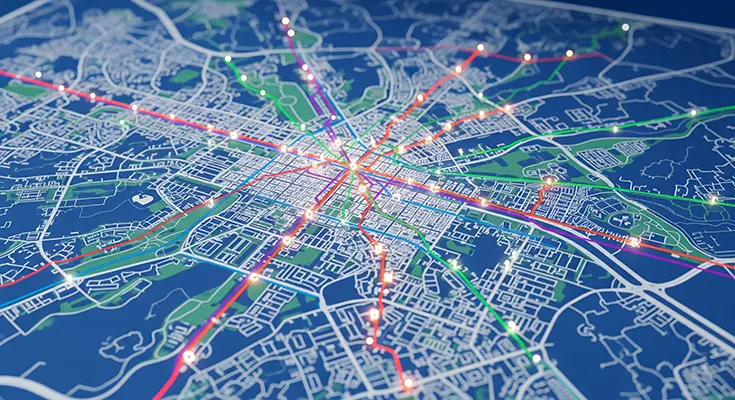The vision of a smart city—an urban environment where data, technology, and connectivity enhance the quality of life for its residents—is inextricably linked to the future of autonomous transportation. As autonomous vehicles (AVs) transition from a futuristic concept to a commercial reality, their integration with smart city infrastructure is set to revolutionize urban mobility, promising safer, more efficient, and more sustainable cities. This transformation is not simply about driverless cars; it is about building a new ecosystem where vehicles, infrastructure, and people communicate seamlessly to create a living, breathing, and intelligent network.
From Standalone Vehicles to a Connected Ecosystem
The key to unlocking the full potential of AVs in smart cities lies in their ability to communicate with both each other and the urban infrastructure. This “Vehicle-to-Everything” (V2X) communication is the digital nervous system of the smart city, allowing for a level of coordination and efficiency that is impossible with human-driven vehicles.
- Smart Intersections: Traditional traffic lights operate on fixed timers, leading to needless idling and congestion. In a smart city, AI-powered traffic management systems will use real-time data from a network of sensors (LiDAR, radar, and cameras) and the AVs themselves to dynamically adjust signal timings. This allows for a more fluid flow of traffic, giving priority to high-traffic corridors and emergency vehicles.
- Optimized Traffic Flow: AVs, which can communicate their location, speed, and intended route, will be able to travel in platoons, driving closer together to increase road capacity and reduce air drag. This not only eases congestion but also leads to significant environmental benefits by reducing fuel consumption and emissions from stop-and-go traffic.
- Smart Parking and Fleet Management: In a world where AVs can drop off passengers at a designated area and then park themselves, cities can drastically reduce the need for expansive, land-consuming parking lots. This freed-up urban space can then be repurposed for parks, pedestrian walkways, and other public amenities. For fleets of autonomous buses, shuttles, and delivery vehicles, this connectivity will enable real-time route optimization, ensuring that a city’s public transit and logistics systems operate with maximum efficiency.
The Benefits: Beyond Convenience
The integration of autonomous transportation into smart cities promises a cascade of benefits that go far beyond a smoother commute.
- Enhanced Safety: Human error is a factor in a vast majority of all traffic accidents. By removing human factors such as distraction, fatigue, and impaired driving, AVs have the potential to drastically reduce the number of accidents, saving thousands of lives each year and reducing the economic and social costs associated with collisions.
- Accessibility and Mobility: Autonomous transportation can be a game-changer for individuals who are currently unable to drive due to age, disability, or other factors. On-demand autonomous services could provide a level of personal mobility and independence that was previously unavailable, allowing for greater access to jobs, education, and healthcare.
- Sustainability and Environmental Gains: A key feature of this future is the decline of private car ownership. As shared, autonomous, and electric fleets become more common and affordable, they will replace many private vehicles, leading to a significant reduction in emissions and fuel consumption. This, combined with the traffic-smoothing effects of AVs, will make urban air cleaner and cities more livable.
The Roadblocks and the Path Forward
Despite the immense promise, the transition to a fully autonomous urban ecosystem faces significant hurdles. A lack of clear, consistent regulations remains a major challenge, as different cities and countries grapple with liability issues, data privacy concerns, and safety standards. Public perception is also a key factor; building trust in self-driving technology after highly publicized accidents is an ongoing process.
Furthermore, the integration of autonomous vehicles requires massive investments in a new type of infrastructure—one that is both physical and digital. This includes the deployment of 5G networks, the installation of roadside sensors, and the development of sophisticated data management platforms to handle the terabytes of information generated by a city’s transportation network.
However, pilot programs in cities like Singapore and San Francisco are already demonstrating the feasibility of this vision. By focusing on targeted, commercially viable applications first—such as robotaxis in geofenced areas and autonomous public shuttles—cities are building the necessary frameworks and gathering the data to scale this technology. The future of transportation in smart cities is not about a sudden, disruptive arrival of self-driving cars, but a gradual, collaborative, and ultimately transformative integration that will redefine our relationship with urban mobility.













